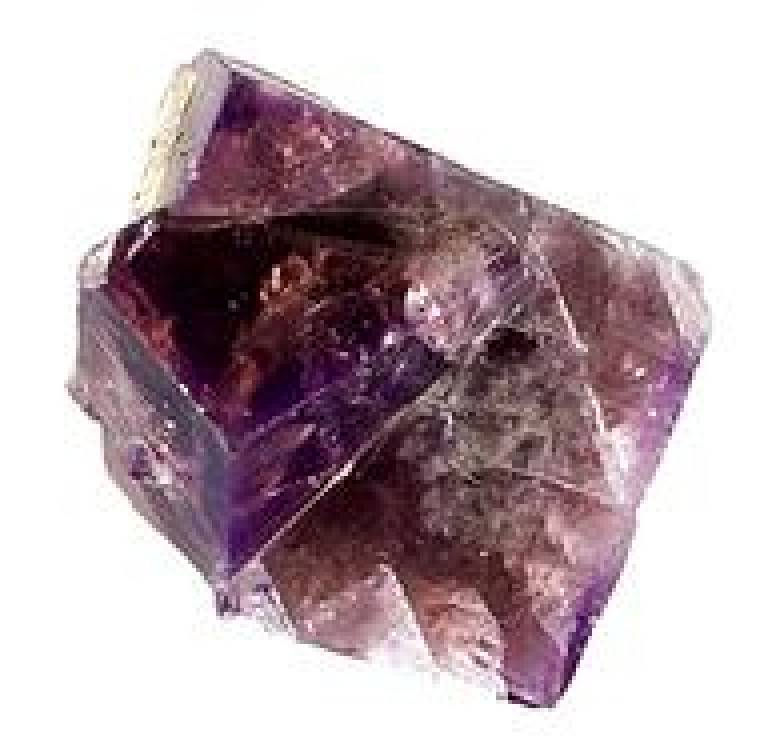An object lesson in enhancing life and learning
14 March 2007
UCL owns close to one million artefacts, on proud display in its four renowned public museums, nestling in departmental archives or in long-term storage.
 Dr Helen Chatterjee, Deputy Director of UCL's Museums and Collections, has launched a raft of innovative projects to prove that the university's historical texts, artworks and fossils can enhance teaching across the faculties, and can even improve our health.
Dr Helen Chatterjee, Deputy Director of UCL's Museums and Collections, has launched a raft of innovative projects to prove that the university's historical texts, artworks and fossils can enhance teaching across the faculties, and can even improve our health.
Over 100 undergraduate and postgraduate course units already incorporate an object-handling element. Getting to grips with objects related to topics previously covered theoretically is a simple way of injecting dynamism into a subject, as well as reinforcing the paper learning that's gone before.
"Biology students have three lectures on primate evolutionary anatomy, but it is only when they start measuring skulls that they can demonstrate they've actually understood what they've been taught," says Dr Chatterjee. "During these sessions, students tend to work in teams, so they gain additional skills such interpersonal communication, but also valuable practical skills in data analysis, observation and drawing."
Following a university-wide survey to assess the potential interest of integrating museum artefacts into teaching, Dr Chatterjee was swamped with approaches, often from unexpected quarters.
"I must admit I was a bit stumped when I was approached by UCL Computer Science last summer," she admits, "but we got our digital resources manager involved and came up with a fantastically novel project. In collaboration with the Head of Computer Science, Professor Anthony Finkelstein, we devised a group project for Computer Science undergraduates to link our collections databases to a virtual learning environment. The idea is that in future students and lecturers will be able to generate their own object-based learning resources, search the collections and learn more about everything we hold from their desktops. Apart from the technical challenge, the students get a flavour of what it is like to be contracted on a real-world project: they have to deal with the 'client', understand the deliverables, do the research and product development and then write-up their progress."
Next year, students at the UCL School of Library, Archive & Information Studies will get in on the act, trialling and evaluating how arts and humanities-related electronic resources interface with the Computer Science students' design for flexibility and functionality.
UCL Geomatic Engineering has proved another surprising partner. It is a frequent user of Europe's first Arius 3D colour laser scanner (based within UCL Geography), which boldly takes the examination of artefacts where no man has gone before. Ten items from the UCL Petrie Museum of Egyptian Archaeology have been scanned to discover how colours might have faded over the years, and to pinpoint wear-and-tear patterns that could flag up potential long-term damage.
Beyond Gower Street, UCL's treasures are enriching history lessons and inspiring children to consider higher education by lending teachers boxes of artefacts. A pioneering initiative established with UCL Hospitals involves second-year medical students taking UCL collections to patients' bedsides to assess the therapeutic potential of object handling for their Special Study Component project.
Another project with the UCL Elizabeth Garrett Anderson Institute for Women's Health is investigating the therapeutic benefits of object handling for women undergoing screening for gynaecological cancers. It's likely that this pilot will pave the way for a major grant to conduct large-scale research that will inform future health policy.
"As a university museum, one of our remits is to be experimental, to discover new ways that our collections can enhance life and learning," explains Dr Chatterjee. "We're collaborating with the UCL Centre for the Advancement of Learning and Teaching on that front, and we're interested to hear from any department that would like to get involved in looking at the pedagogy behind object-handling."
Dr Chatterjee is also keen to hear from anyone who is responsible for a collection. "There are lots of small collections scattered throughout the university, many of which have come into departments through a legacy. Some have only one member of staff looking after them, or indeed aware of them! Over the past few years we've worked with quite a few people in this position, helping record what we actually possess and collaborating on care of the objects. Once we know the extent and spread of holdings, the next step is to embed them in teaching and research in some way, so that we can get the best possible use from them."
Workshops are on offer for anyone concerned about handling valuable objects and integrating them meaningfully into courses. According to Dr Chatterjee, the best time to make contact is over the summer months, so that there is plenty of time before term begins to discuss possibilities, structure teaching and develop appropriate resources.
"UCL has at its disposal an outstanding range of museum objects which offer exciting potential with regard to enhancing subject-specific knowledge, acquiring practical skills and as a medium for inspiration, experimentation and innovation," she concludes.
To find out more about object-based learning, use the link at the top of this article.
Image 1: Learning with objects has been an integral part of geological study at UCL since the nineteenth century. The collection includes rocks, minerals and fossils collected over the last 175 years
Images 2 and 3: Loanboxes and widening participation projects take the benefits of UCL's treasures beyond Gower Street
By Lara Carim, UCL Communications
 Close
Close

